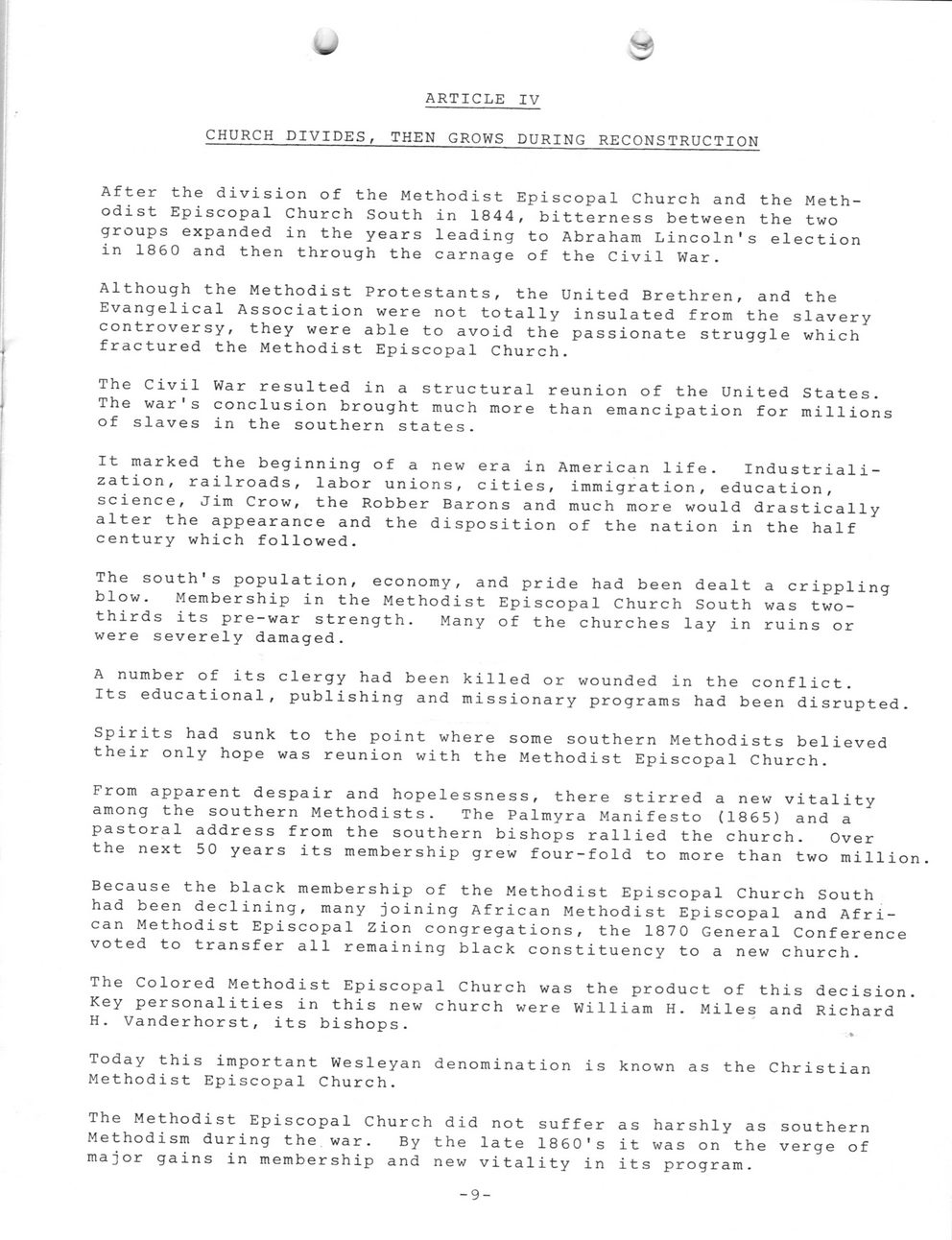This text was obtained via automated optical character recognition.
It has not been edited and may therefore contain several errors.
ARTICLE IV CHURCH DIVIDES, THEN GROWS DURING RECONSTRUCTION After the division of the Methodist Episcopal Church and the Methodist Episcopal Church South in 1844, bitterness between the two groups expanded in the years leading to Abraham Lincoln's election in 1860 and then through the carnage of the Civil War. Although the Methodist Protestants, the United Brethren, and the Evangelical Association were not totally insulated from the slavery controversy, they were able to avoid the passionate struggle which fractured the Methodist Episcopal Church. The Civil War resulted in a structural reunion of the United States. The war's conclusion brought much more than emancipation for millions of slaves in the southern states. It marked the beginning of a new era in American life. Industrialization, railroads, labor unions, cities, immigration, education, science, Jim Crow, the Robber Barons and much more would drastically alter the appearance and the disposition of the nation in the half century which followed. The south's population, economy, and pride had been dealt a crippling blow. Membership in the Methodist Episcopal Church South was two-thirds its pre-war strength. Many of the churches lay in ruins or were severely damaged. A number of its clergy had been killed or wounded in the conflict. Its educational, publishing and missionary programs had been disrupted. Spirits had sunk to the point where some southern Methodists believed their only hope was reunion with the Methodist Episcopal Church. From apparent despair and hopelessness, there stirred a new vitality among the southern Methodists. The Palmyra Manifesto (1865) and a pastoral address from the southern bishops rallied the church. Over the next 50 years its membership grew four-fold to more than two million. Because the black membership of the Methodist Episcopal Church South had been declining, many joining African Methodist Episcopal and African Methodist Episcopal Zion congregations, the 1870 General Conference voted to transfer all remaining black constituency to a new church. The Colored Methodist Episcopal Church was the product of this decision. Key personalities in this new church were William H. Miles and Richard H. Vanderhorst, its bishops. , Today this important Wesleyan denomination is known as the Christian Methodist Episcopal Church. The Methodist Episcopal Church did not suffer as harshly as southern Methodism during the war. By the late 1860's it was on the verge of major gains in membership and new vitality in its program. -9-

Main Street Methodist Church Document (021)